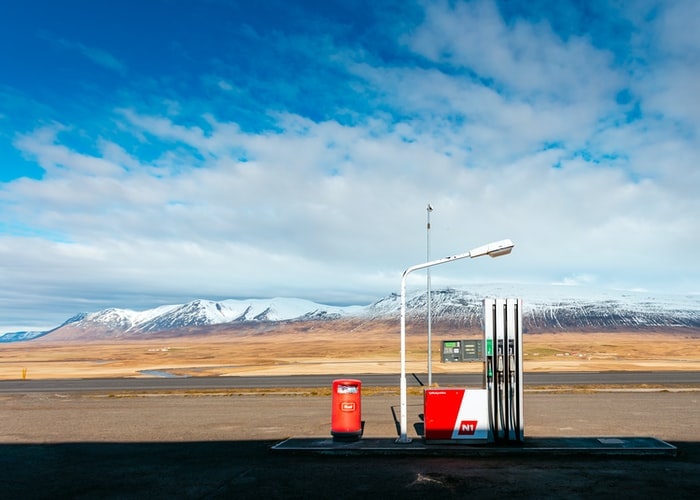OPEC (Organization of the Petroleum Exporting Countries)

OPEC (The Organization of the Petroleum Exporting Countries is an intergovernmental organization consisting of 13 countries.)
1.UAE (United Arab Emirates)
2.Nigeria
3.Libya
4.Algeria
5.Qatar
6.Angola
7.Gabon
8.Saudi Arabia
9.Congo
10.Equatorial Guinea
11.Venezuela
12.Iraq
13.Iran
13.Kuwait
OPEC was founded by five member countries on September 14, 1960, in Baghdad capital of Iraq. Five-Member countries are:-
1.Iran
2.Iraq
3.Kuwait
4.Saudi Arabia
5.Venezuela
It had its headquarters in Geneva, Switzerland, in the first five years of its existence. After that, it moved its Headquartered to Vienna, Austria on September 1, 1965.
OPEC+ (Organisation of the Petroleum
Exporting Countries)
The Organization of the Petroleum Exporting Countries Plus consists of the 13 OPEC and 10 non-OPEC oil-exporting countries of the world. The Non-OPEC countries which export crude oil are termed OPEC+ countries. It was formed in late 2016 controls over 50 percent of global oil supplies. These are Non-OPEC+ countries.
1.Russia
2.Azerbaijan
3.Sudan
4.South Sudan
5.Bahrain
6.Malaysia
7.Brunei
8.Kazakhstan
9.Mexico
10.Oman
OBJECTIVES OF OPEC AND OPEC+
1.To seek ways and methods of ensuring the stabilization of prices in international oil markets to eliminate harmful and nonessential fluctuations.
2.To provide an efficient economic and regular supply of petroleum to consuming nations and return on capital to those investing in the petroleum industry.
3.To synchronize and unify the petroleum policies of member countries and to decide the best means for safeguarding their individual and collaborative interests.
IEA (INTERNATIONAL ENERGY AGENCY)
IEA is a Paris-based autonomous intergovernmental organization.
It works within the comprehensive framework of the Organization for Economic Co-Operation and Development(OECD) to help and prevent any large-scale disruptions in the international supply of oil founded in 1974 following the 1973 oil crisis headquartered in Paris, France.
In recent years, the IEA (international energy agency) has also focused on renewable energy. India has joined the International Energy Agency as an associate member in 2017 after a series of intensive consultations with all the relevant ministries.
The IEA (International energy agency) has interfered in oil markets three times by discharging oil stocks in 1991 in the course of the Gulf War, in 2005 by releasing 2 million barrels per day after Hurricane Katrina, and most recently in the 2011 Libyan civil war.
MEMBER COUNTRIES OF IEA (INTERNATIONAL ENERGY AGENCY)
1.Australia, 2.Austria, 3.Belgium, 4.Canada, 5.Czech Republic, 6.Denmark, 7.Finland, 8.France, 9.Germany, 10.Greece, 11.Hungary, 12.Ireland, 13.Italy, 14.Japan, 15.South Korea, 16.Luxembourg, 17.Netherlands, 18.New Zealand, 19.Norway, 20.Poland, 21.Portugal, 22.Slovakia, 23.Spain, 24.Sweden, 25.Switzerland, 26.Turkey, 27.The United Kingdom, 28.The United States.
A candidate country to the IEA must be a member country of OECD.
OECD (Organisation for Economic Co-operation and Development) is an intergovernmental organization founded on September 30, 1961, headquartered in Paris, France to shape policies that foster prosperity, opportunity, equality, and well-being for all. It is a group of 38 typically democratic member countries that support free-market economies.
LARGEST CRUDE SUPPLIERS TO INDIA
1.Iraq
2.Saudi Arabia
3.Iran
4.Venezuela
5.Nigeria
6.United Arab Emirates(UAE)
Region-wise crude oil imports shares are:-
1.The Middle East
2.Africa
3.South America
India is the third-biggest oil consumer and importer in the world after the USA and China. In 2021, the USA (United States of America) has overtaken Saudi Arabia and became the second-largest oil supplier of India. Iraq topped the oil-exporting countries in India for the last few years.
India imports 82% of oil and focusing to cut it down to 67% by 2022 by replacing it with local exploration. Oil deposits in India were first discovered near the town of Digboi in the state of Assam.
CHALLENGES TO OPEC AND OPEC+ CRUDE OIL-PRODUCING COUNTRIES
As per the report from the think-tank Carbon Tracker, the total revenue loss for oil-producing countries by 2040 will be dollar 13 trillion (in 2020 dollars).
1.The world has been shifting to cleaner energy sources, due to which the scope of OPEC’s crude oil may face a major threat.
2.The United States of America (USA) has been emerging as a major oil exporter.
3.Divisions within its members for regional power struggles and differences in opinions.
CONCLUSION
On July 18, 2021, OPEC (the organization of the petroleum exporting countries) reached an agreement to increase its crude production by 400,000 barrels per day every month till the halted output is fully restored.
Major Oil and Gas companies are expanding their portfolios to incorporate more renewable technologies. This is an attempt to capture new sectors of demand as crude oil becomes more competitive.
New solar technologies are emerging, last year Ali al-Naimi, in his speech in Poland made it clear “oil is not the kingdom’s only energy wealth.”



